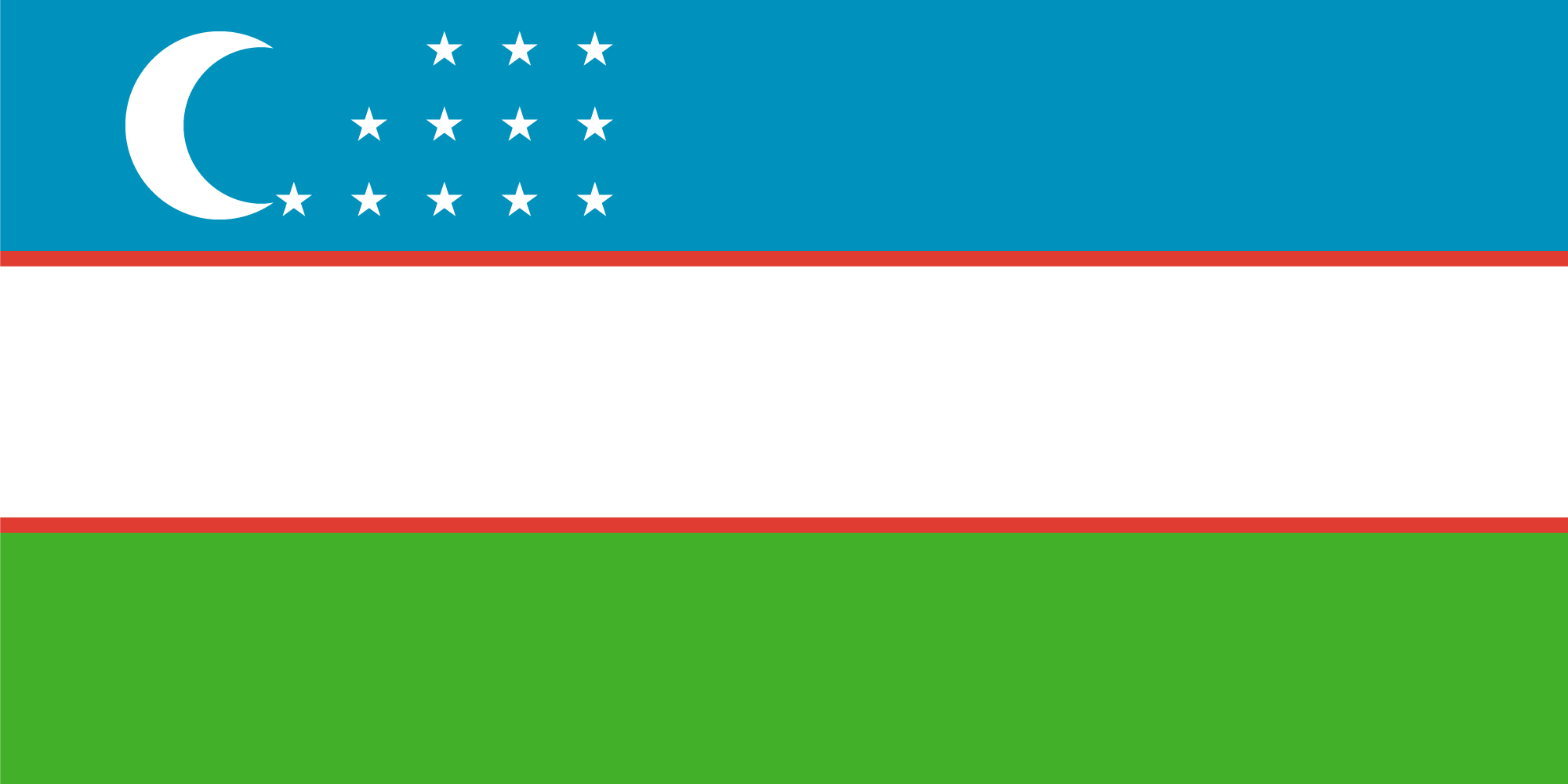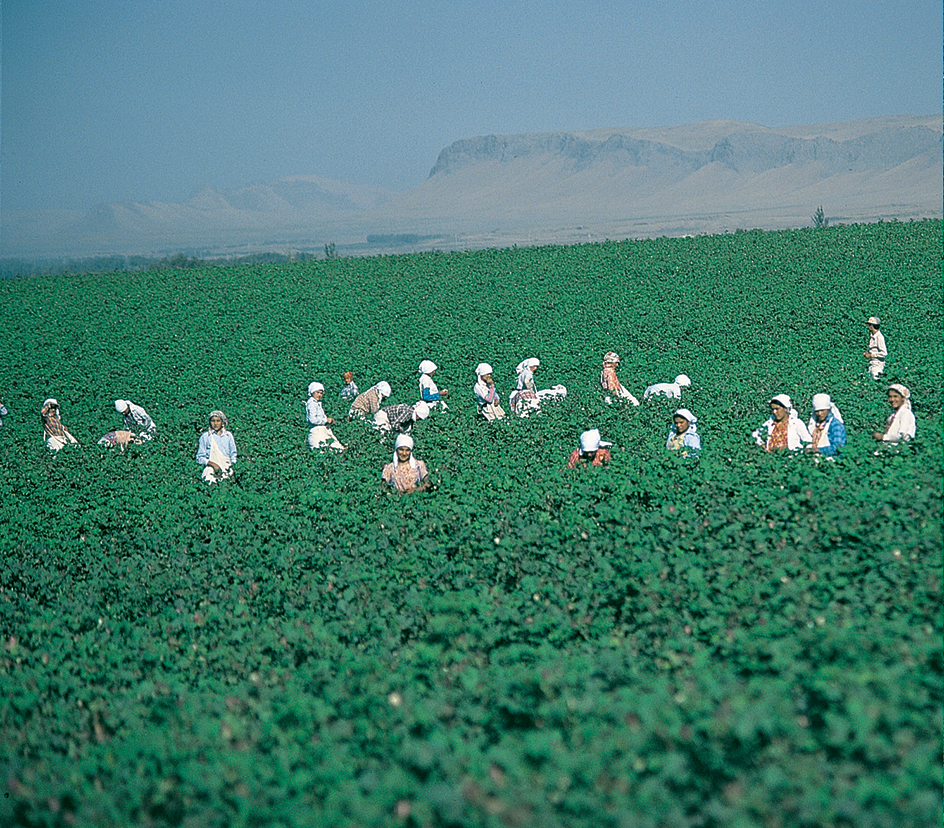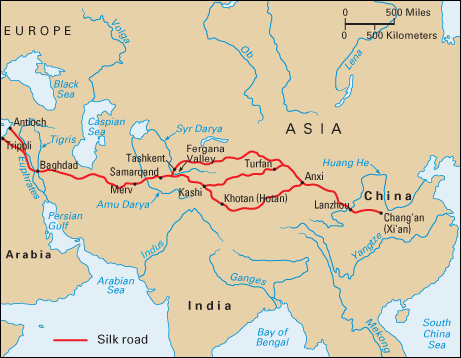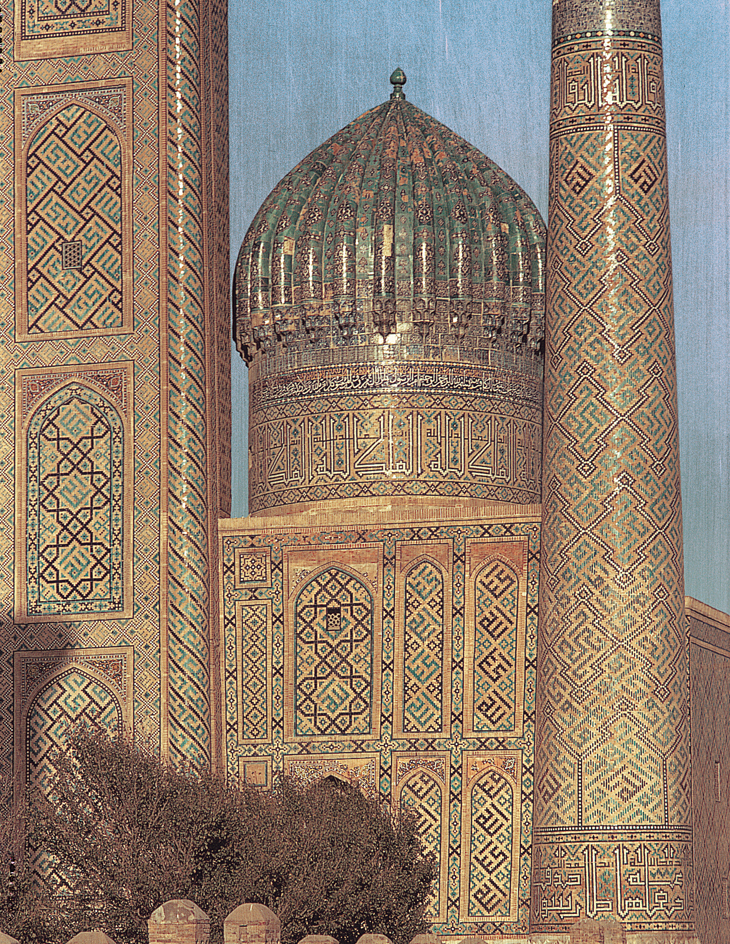Uzbekistan << OOZ behk ih `stan` >> is a country in central Asia. It extends from the foothills of the Tian Shan and Pamir mountains to land just west of the Aral Sea. Its capital and largest city is Tashkent. Uzbekistan became independent in 1991, after nearly 70 years as a republic of the Soviet Union.

Government.
Uzbekistan has a president, a prime minister, a Cabinet of Ministers, and a two-house legislature called the Supreme Assembly. The president is elected to a five-year term. The Supreme Assembly consists of an elected Legislative Chamber and a Senate. The Senate is partly elected and partly appointed. All legislators serve five-year terms. The president is the most powerful government official. The president appoints the prime minister, Cabinet members, and governors of provinces. The prime minister and the Cabinet carry out government operations.

One of the largest political parties in Uzbekistan is the People’s Democratic Party, a successor to the Communist Party that kept much of its membership and policies. Other major parties include the Ecological Party, the Justice Social Democratic Party, the Liberal Democratic Party, and the National Revival Democratic Party. None of these parties stand in opposition to the government’s policies.
People.
Ethnic Uzbeks make up more than 70 percent of the population. Russians, the second largest group, make up less than 10 percent of the population. Other groups include Tatars, Kazakhs, Tajiks, and Karakalpaks.
The Uzbeks are descended from Turkic tribes, Mongols, Persians, and other peoples. They live mainly in rural areas. They speak Uzbek, the country’s official language, which is related to Turkish. The Russians speak Russian and live mainly in cities. Many non-Russians also speak Russian because the Soviet government encouraged people to learn the language when Uzbekistan was a Soviet republic. Russian remains part of the school curriculum.
Most people in Uzbekistan are Muslims. Islam (the Muslim religion) is an important force in Uzbek society.
Most rural dwellers are farmers. Most rural homes are made of sun-dried earthen bricks. Many of them have no indoor plumbing or central heating. City dwellers live in single-story homes and multistory apartment buildings.
The people of Uzbekistan wear both traditional dress and clothing like that worn in Europe and the Americas. Traditional dress for men includes long robes and black boots. Women sometimes wear bright cotton or silk dresses and silk scarves. The people often wear traditional embroidered skullcaps.
Most of the families of Uzbekistan are large, and many include six or more children. In rural areas, many members of an extended family may live together in one household. Such a household might include parents, married children and their offspring, and other relatives. Because of marriage patterns, it is common for all the people in a village to be related to one another. Many marriages are arranged by the families of the bride and groom. People spend much time entertaining guests, and they have elaborate customs related to hospitality.
Foods commonly eaten include rice, vegetables, fruit, mutton, and a flat, round bread called nan. Pilaf, a rice dish, is also popular. Tea is the most popular drink.
Soccer is widely enjoyed in Uzbekistan. Traditional Uzbek recreational activities include wrestling and tightrope walking. Another favorite sport is ulaq, a game played on horseback in which riders try to grab a dead sheep and carry it across a goal.
Uzbeks are known for their crafts. These include carpet making, embroidery, glazed pottery, jewelry making, metalwork, and woodcarving.
Children in Uzbekistan attend elementary and general secondary schools. Many young people continue their education in trade schools, institutes, or universities. The country has a number of universities and other institutes of higher education.
Land and climate.
About 80 percent of Uzbekistan’s land consists of plains and deserts. The vast Kyzylkum desert lies in central Uzbekistan. It is largely uninhabited except for mining towns. Plains south and east of the desert are used mostly for growing cotton. Farmers raise livestock in the plains and in irrigated desert areas. Uzbekistan’s most densely populated region is the Fergana Valley, in the east. The valley receives its water from mountains of the Tian Shan range that surround it. Central Asia’s two most important rivers, the Syr Darya and the Amu Darya, flow to the Aral Sea from the Tian Shan and Pamir mountains.
Summers in Uzbekistan are long, dry, and hot. Winters are cold. Summer temperatures in southern Uzbekistan may reach 113 °F (45 °C). In the north, winter temperatures may drop to –35 °F (–37 °C).
Economy.
Uzbekistan’s economy is largely controlled by the government. The government tells farmers what crops to grow. The state owns many of the factories. The state also controls much of the banking and foreign trade sectors.
Cotton is the chief crop. Uzbekistan is one of the world’s leading cotton producers. Other important crops include apples, carrots, grapes, potatoes, tomatoes, and wheat. Farmers also raise beef and dairy cattle and sheep. Wool from the karakul, a breed of sheep raised in Uzbekistan, is highly prized for coats. Mining operations produce coal, copper, gold, natural gas, and petroleum. Uzbekistan’s important manufactured products include automobiles, chemicals, food products, and textiles. 
Uzbekistan’s roads and railroads are generally in poor condition. Termiz has a port on the Amu Darya. Tashkent has an international airport. The government dominates newspaper publication and radio and television broadcasting.
History.
People have lived in what is now Uzbekistan for thousands of years. Alexander the Great conquered the region in the 300’s B.C. From this time through the 1400’s, the area was important because of its location along the Silk Road. The Silk Road was a major trade route for caravans carrying silk and other luxury goods from China to the Middle East.

In the 600’s, Arabs invaded what is now Uzbekistan and introduced Islam to the area. Turkic tribes began to arrive in the region in the 700’s. Mongols, led by Genghis Khan, conquered the region in the early 1200’s. In the late 1300’s, the Mongol conqueror Timur (also known as Tamerlane) founded the capital of his vast Asian empire in Samarqand, now Uzbekistan’s second largest city.

A group of Turkic tribes known as the Uzbeks invaded what is now Uzbekistan in the 1500’s. Over time, political states called khanates were established in the region. In the 1800’s, the khanates were conquered by Russia or came under Russian influence. Revolutionaries known as Bolsheviks (later called Communists) won control of Russia in 1917. In 1924, Uzbekistan became a republic of the Soviet Union, which had been formed under Russia’s leadership in 1922.
The Soviets made many changes in Uzbekistan. The Soviet government built roads, schools, and modern housing, and it expanded industry. The Soviets also collectivized agriculture—that is, they ended private farming and transferred control of farms to the government. The Soviets strongly emphasized cotton production, which caused serious environmental problems. For example, overplanting of cotton harmed the soil, and overuse of fertilizers polluted drinking water.
The Soviet government maintained strict control of all aspects of life until the late 1980’s. In 1990, the Uzbek government declared that its laws overruled those of the Soviet central government. In August 1991, conservative Communist officials failed in an attempt to overthrow Soviet President Mikhail S. Gorbachev. During the upheaval that followed, Uzbekistan and several other republics declared their independence. In December, Uzbekistan joined other republics in a loose association called the Commonwealth of Independent States. The Soviet Union formally dissolved on December 25.
On Dec. 29, 1991, Uzbekistan held its first presidential elections following independence. Islam A. Karimov of the People’s Democratic Party of Uzbekistan won. He had been the Communist Party leader.
The rapid changes in Uzbekistan brought economic hardships. But the government maintained political stability. However, international organizations criticized Uzbekistan’s government for its harsh policy in the area of human rights.
In 1995, a referendum extended President Karimov’s term to 2000. He was reelected in 2000. In 2002, another referendum extended the presidential term from five years to seven.
In 2005, thousands of Uzbeks participated in demonstrations in the eastern city of Andijon. They were protesting the trial and imprisonment of 23 local businessmen accused of being Muslim extremists. At first, the demonstrations were peaceful. But in May, an armed group stormed the Andijon prison and freed the 23 businessmen, along with hundreds of other prisoners. Protests continued, and Uzbek troops entered the city. The troops reportedly opened fire on the demonstrators, though the government blamed armed protesters for the violence. Eyewitnesses said hundreds of people were killed. The government said 187 people died, but did not allow an independent investigation into the violence. The government arrested and convicted at least 70 people in connection with the uprising, claiming they were terrorists.
Although Uzbekistan’s Constitution sets a two-term limit for presidents, Karimov won a third term in 2007. International observers noted that Karimov had run against three virtually unknown opponents. Karimov won a fourth term in 2015. He died in 2016, and Prime Minister Shavkat Mirziyoyev was elected to succeed him as president.
